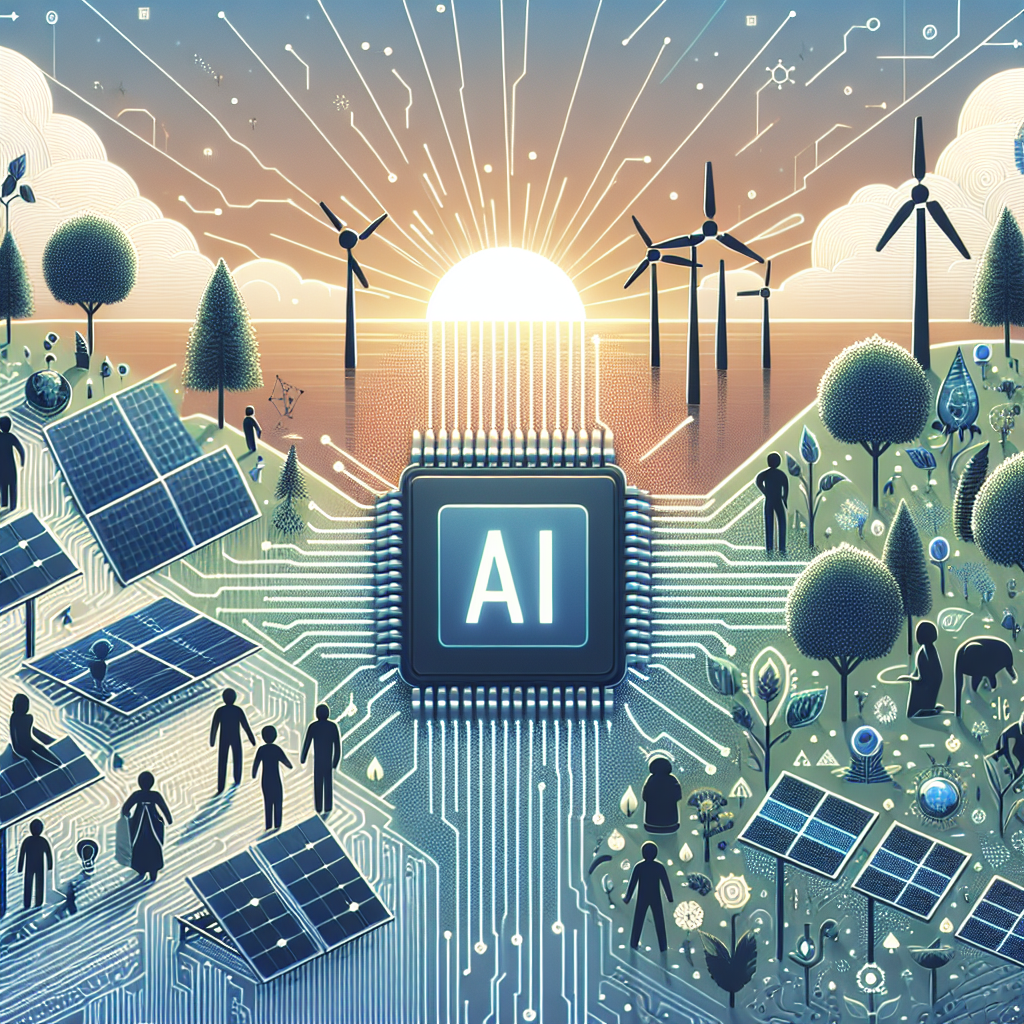In recent years, artificial intelligence (AI) has emerged as a powerful tool for driving innovation and creating sustainable livelihoods. From improving agricultural practices to enhancing healthcare services, AI-driven innovations have the potential to transform various sectors and improve the quality of life for millions of people around the world. In this article, we will explore some of the key AI-driven innovations that are helping to create sustainable livelihoods and address common questions about this rapidly evolving field.
AI in Agriculture
One of the most promising applications of AI in creating sustainable livelihoods is in the field of agriculture. By utilizing AI-powered tools such as drones, sensors, and machine learning algorithms, farmers can optimize their crop yields, reduce waste, and minimize the use of pesticides and fertilizers. For example, AI can help farmers predict crop diseases, optimize irrigation schedules, and monitor soil health, leading to higher yields and increased profits.
AI in Healthcare
Another area where AI is driving innovation for sustainable livelihoods is in healthcare. AI-powered technologies such as diagnostic algorithms, remote monitoring devices, and personalized treatment plans are revolutionizing the way healthcare is delivered. By leveraging AI, healthcare providers can improve patient outcomes, reduce healthcare costs, and increase access to quality care, particularly in underserved areas.
AI in Education
AI is also transforming the field of education by providing personalized learning experiences, improving teaching methods, and expanding access to education. AI-powered tools such as intelligent tutoring systems, virtual classrooms, and adaptive learning platforms are helping students learn at their own pace and in their preferred learning style. By harnessing the power of AI, educators can create more engaging and effective learning environments, ultimately leading to better educational outcomes and increased job opportunities for students.
AI in Energy
The energy sector is another area where AI-driven innovations are making a significant impact on creating sustainable livelihoods. By using AI to optimize energy production, distribution, and consumption, companies can reduce their carbon footprint, lower energy costs, and increase energy efficiency. For example, AI can help utility companies predict energy demand, optimize renewable energy sources, and improve grid reliability, leading to a more sustainable and resilient energy infrastructure.
AI in Transportation
AI is also revolutionizing the transportation industry by enabling autonomous vehicles, optimizing traffic flow, and reducing emissions. By using AI-powered algorithms, transportation companies can improve safety, reduce congestion, and lower fuel consumption. Autonomous vehicles, in particular, have the potential to transform the way people commute and travel, leading to more efficient and sustainable transportation systems.
Common Questions about AI-Driven Innovations
As AI-driven innovations continue to evolve and expand, many people have questions about this rapidly changing field. Here are some common questions and answers about AI-driven innovations for sustainable livelihoods:
Q: How can AI help create sustainable livelihoods?
A: AI can help create sustainable livelihoods by improving productivity, reducing waste, and optimizing resource use in various sectors such as agriculture, healthcare, education, energy, and transportation. By leveraging AI-powered tools and technologies, companies and organizations can increase efficiency, lower costs, and create new job opportunities for people around the world.
Q: What are some examples of AI-driven innovations for sustainable livelihoods?
A: Some examples of AI-driven innovations for sustainable livelihoods include precision agriculture technologies, personalized healthcare solutions, adaptive learning platforms, smart energy systems, and autonomous transportation vehicles. These innovations are helping to create more sustainable and resilient systems that benefit both people and the planet.
Q: What are the potential challenges of using AI for sustainable livelihoods?
A: While AI has the potential to drive innovation and create sustainable livelihoods, there are also challenges that need to be addressed. These challenges include data privacy and security concerns, ethical considerations, and the potential for job displacement due to automation. It is important for policymakers, industry leaders, and researchers to work together to address these challenges and ensure that AI is used responsibly and ethically.
Q: How can individuals and communities benefit from AI-driven innovations?
A: Individuals and communities can benefit from AI-driven innovations by gaining access to improved services, better job opportunities, and enhanced quality of life. For example, AI-powered healthcare technologies can help individuals receive personalized treatment plans and remote monitoring services, while AI-powered education platforms can provide students with personalized learning experiences and increased access to educational resources.
Q: What is the future of AI-driven innovations for sustainable livelihoods?
A: The future of AI-driven innovations for sustainable livelihoods is bright, with continued advancements in technology and increasing adoption of AI-powered solutions across various sectors. As AI continues to evolve and expand, we can expect to see even more innovative applications that improve productivity, enhance sustainability, and create new opportunities for individuals and communities around the world.
In conclusion, AI-driven innovations have the potential to transform various sectors and create sustainable livelihoods for people around the world. By leveraging the power of AI, companies and organizations can improve productivity, reduce waste, and optimize resource use in agriculture, healthcare, education, energy, transportation, and other key sectors. As AI continues to evolve and expand, it is important for policymakers, industry leaders, and researchers to work together to address challenges and ensure that AI is used responsibly and ethically. By harnessing the power of AI-driven innovations, we can create a more sustainable and resilient future for all.

